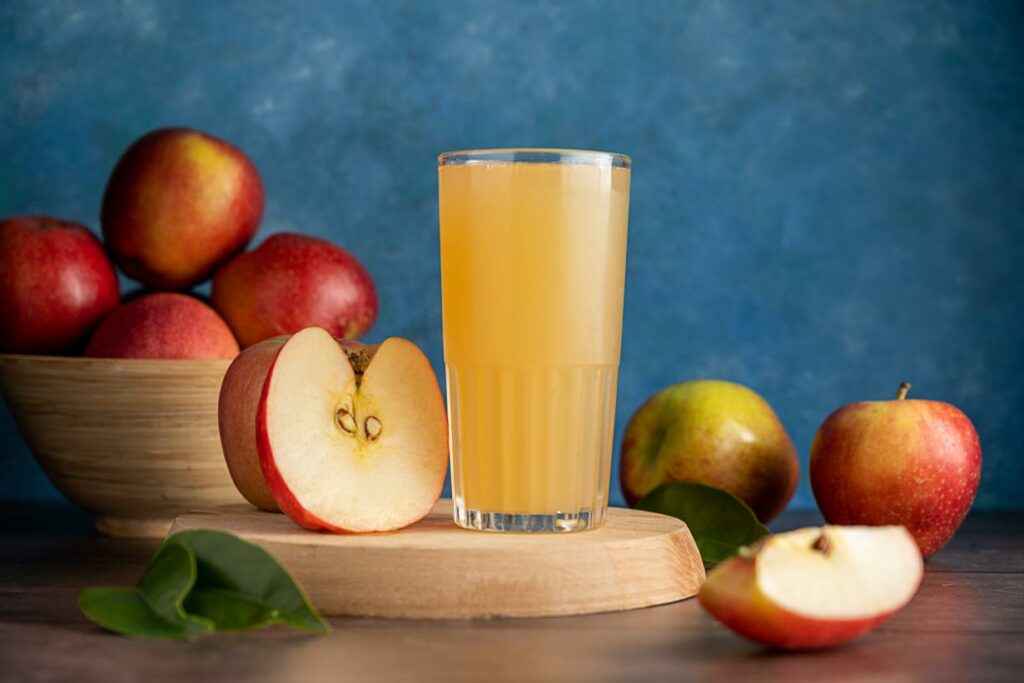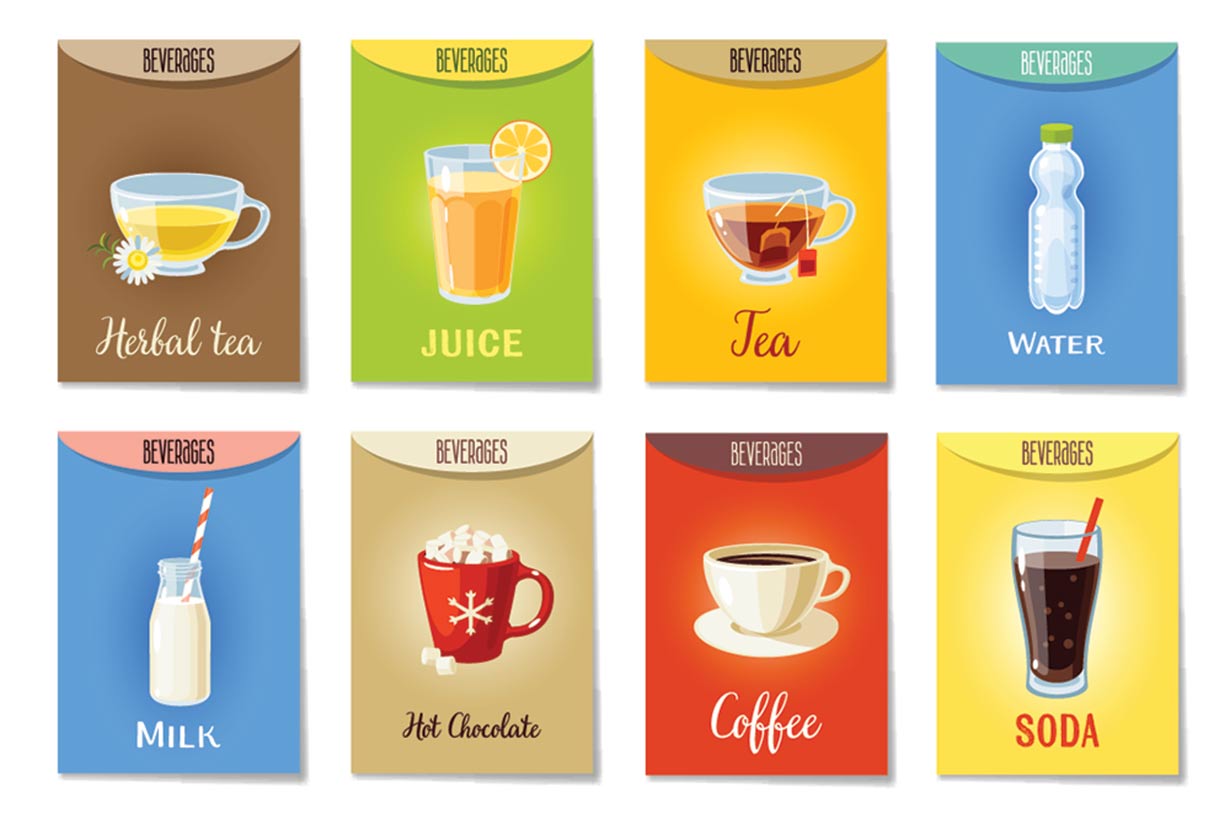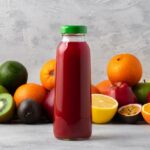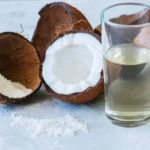Apple juice ranks among the most popular juice beverages.
In fact, sales data reveal that it holds the second position, after orange juice, in terms of sales of juice drinks in the United States (1).
However, is apple juice good for you? Or would it be better to stick to a whole apple?
This article explores the potential benefits and downsides of apple juice, and delves into its nutritional attributes.
The Nutritional Profile of Apple Juice

First of all, let’s take a closer look at the nutritional content of apple juice.
The recommended serving size of apple juice is one cup, equivalent to approximately 248 grams (2).
In the tables below, you’ll find the complete nutritional values for apple juice per 248-gram cup serving.
This nutritional data has been sourced from the USDA’s FoodData Central database (2). Percent Daily Values, based on a 2000-calorie diet, have been calculated using the FDA’s published ‘daily values’ in conjunction with the USDA data (3).
Nutrition Facts
| Name | Amount | % Daily value |
|---|---|---|
| Calories | 119 kcal | |
| Carbohydrates | 28.1 g | 10.2% |
| Fiber | 0.50 g | 1.8% |
| Sugars | 25.1 g | |
| Fat | 0.62 g | 0.8% |
| Saturated | 0.06 g | 0.3% |
| Monounsaturated | 0.02 g | |
| Polyunsaturated | 0.10 g | |
| Omega-3 | 0.02 g | |
| Omega-6 | 0.08 g | |
| Protein | 0.22 g | 0.4% |
| Cholesterol | 0 mg | 0% |
| Water content | 219 g |
A typical glass of apple juice contains 119 calories, with the majority of these calories derived from carbohydrates.
Vitamins
| Vitamin | Amount | % Daily value |
|---|---|---|
| Choline | 4.46 mg | 0.8% |
| Folate, DFE | 4.96 mcg | 1.2% |
| Vitamin A, RAE | 0 mcg | 0% |
| Vitamin B1 (thiamin) | 0.01 mg | 0.8% |
| Vitamin B2 (riboflavin) | 0.04 mg | 3.1% |
| Vitamin B3 (niacin) | 0.06 mg | 0.4% |
| Vitamin B5 (pantothenic acid) | – | – |
| Vitamin B6 (pyridoxine) | 0.04 mg | 2.4% |
| Vitamin B12 (cobalamin) | 0 mcg | 0% |
| Vitamin C | 95.7 mg | 106.3% |
| Vitamin D | 0 mcg | 0% |
| Vitamin E | 0 mg | 0% |
| Vitamin K | 0 mcg | 0% |
Minerals
| Mineral | Amount | % Daily value |
|---|---|---|
| Calcium | 17.4 mg | 1.3% |
| Copper | 0.01 mg | 1.1% |
| Iron | 0.15 mg | 0.8% |
| Magnesium | 12.4 mg | 3.0% |
| Manganese | – | – |
| Phosphorus | 14.9 mg | 1.2% |
| Potassium | 241 mg | 5.1% |
| Selenium | 0.25 mcg | 0.5% |
| Sodium | 12.4 mg | 0.5% |
| Zinc | 0 mg | 0% |
Potential Benefits of Apple Juice
The primary nutritional benefit of apple juice are its vitamin C content.
However, it might also offer additional benefits from its phytonutrient content.
With consideration of its nutritional profile and insights from scientific research, here is a review of some of the potential benefits associated with apple juice.
Tends To Be a Good Source of Vitamin C
Apple juice is a notable source of vitamin C, and a standard 248-gram cup provides more than 100% of the recommended daily value (2, 3).
While apples themselves don’t naturally contain a large amount of vitamin C, most apple juice products include added ascorbic acid (vitamin C).
This addition not only helps preserve the apple juice and prevent it from browning, but also contributes to its high vitamin C content.
If you’re drinking apple juice primarily for its vitamin C content, make sure to check the label to confirm the presence of added vitamin C.
Vitamin C is an essential vitamin with antioxidant properties, and it can help to protect cells from damage and support the immune system (4).
Good Source of Potassium
Potassium is an essential mineral that most people don’t consume in sufficient quantities (5).
One of its most important functions it the regulation of blood pressure. In this regard, research consistently underscores that a higher potassium-to-sodium intake is associated with lowered blood pressure (6, 7).
A 248-gram glass of apple juice supplies 241 mg of potassium, equivalent to 5.1% of the recommended daily value (2, 3).
Phytochemical Content
Apples, and consequently, apple juice, are a rich source of various phytonutrients. Phytochemicals are bioactive compounds found in plants that can exert beneficial effects on the body (8).
Among these phytonutrients, polyphenols, a specific type, are found in high amounts within apple juice. Notably, the juice contains a concentrated presence of polyphenols such as catechin, chlorogenic acid, phloridzin, and quercetin (9).
Interestingly, research findings have demonstrated that freshly prepared apple juice contained higher polyphenol concentrations (110-459 mg/L) compared to commercial samples (53-217 mg/L) (9).
May Improve Markers of Cardiovascular Health
Several studies have delved into the impact of apple juice on markers of cardiovascular risk.
While the research in this area is somewhat limited, here’s an overview of some key findings.
Study Findings
- In a randomized controlled trial utilizing a dietary crossover design, 23 healthy adults were assigned to consume one of the following for four weeks: whole apples, apple pomace, cloudy apple juice, or clear apple juice. Over this period, participants consuming whole apples, apple pomace, or cloudy apple juice witnessed reductions in their LDL Cholesterol (LDL-C). In contrast, clear apple juice resulted in an increase (10). This research suggests that a particular type of apple juice, namely cloudy apple juice, may have benefit, whereas regular (clear) apple juice may not. The likely reason behind this distinction is that cloudy apple juice contains more of the whole fruit, thus it retains some of the apple’s fiber content.
- As part of a randomized crossover trial involving 28 healthy adults, men and women were given 375 ml of apple juice daily for six weeks. The results indicated that apple juice consumption reduced LDL oxidation time by approximately 20% (11). Research has shown that elevated levels of oxidized LDL are prevalent in individuals with cardiovascular disease (12, 13).
- In a randomized controlled trial involving 68 healthy men, daily consumption of 750 ml of cloudy apple juice over four weeks led to greater reduction in body fat compared to a calorie-matched control beverage (14).
Can Increase Iron Absorption
Being a rich source of vitamin C, apple juice consumption can boost the absorption of iron from plant-based foods.
This occurs because vitamin C has been demonstrated to enhance the absorption of non-heme iron, the type of iron present in plant foods (15, 16).
Non-heme iron is not as readily absorbed by the body as the heme iron found in animal-based foods (17).
Consequently, consuming a small amount of apple juice alongside a plant-based iron source may help to increase iron absorption.
In support of this, a randomized controlled trial involving 25 healthy children investigated the impact of apple and orange juice on iron absorption. The study revealed that both apple and orange juice equally increased iron absorption from a meal (18).
How Does a Serving of Apple Juice Compare To Eating One Apple?
According to the Dietary Guidelines for Americans, a serving of 100% apple juice counts as a serving of fruit (19).
However, how does a one-cup serving of apple juice compare nutritionally against a whole apple?
The table below offers a direct side-by-side comparison of the key nutrition facts and vitamin C content between the two (2, 20).
The data for the whole apple is based on analytical data combining various apple varieties, including red delicious, golden delicious, gala, granny smith, and fuji, to provide averaged nutritional values.
| Nutrient | 248-gram cup of apple juice | Medium (182g) apple |
|---|---|---|
| Calories | 119 kcal | 95 kcal |
| Carbohydrates | 28.1 g | 25.1 g |
| Fiber | 0.50 g | 4.37 g |
| Sugars | 25.1 g | 18.9 g |
| Fat | 0.62 g | 0.31 g |
| Protein | 0.22 g | 0.47 g |
| Vitamin C | 95.7 mg | 8.37 g |
As shown in the table, a cup of apple juice contains slightly more calories and sugar than a medium apple. Notably, its fiber content is significantly lower, since most apple juice production processes discard the skin during processing.
However, on average, apple juice boasts significantly more vitamin C, thanks to the inclusion of added ascorbic acid.
Potential Downsides of Apple Juice
While it is a reasonably good source of nutrients, it’s essential to also consider the potential drawbacks of consuming apple juice.
Let’s delve into some of these potential downsides.
May Not Be Helpful For Satiety and Subsequent Energy Intake
Drinking calorie-rich juice may not be as effective for inducing satiety as consuming whole fruit. ‘Satiety’ refers to the feeling of being satisfied after eating with a lack of desire for more food
In this context, satiety plays a pivotal role in regulating food intake and preventing overeating (21).
Although there is relatively limited research specific to apple juice in this regard, some studies provide insights.
In a randomized crossover trial, 48 children aged 10-12 were given either low-fat milk, whole-fat milk, or apple juice with their breakfast. Appetite, hunger, fullness, desire to eat, and prospective consumption were assessed hourly between breakfast and lunch (22).
Overall, the study revealed that whole milk induced greater satiety four after consumption compared to skim milk. However, skim milk also “significantly reduced appetite compared to apple juice”, but this effect was only observed in girls.
Interpreting these findings requires caution, and the researchers emphasized the need for further studies with longer follow-up periods.
High In Sugar, Low In Fiber
In contrast to whole apples, apple juice is rich in sugar but lacks a significant fiber content.
As illustrated in the nutritional comparison table, a typical medium-sized apple contains nearly nine times the amount of fiber found in a cup of apple juice (2, 20).
While apple juice is clearly a better option than sugar-sweetened beverages like soda, opting for the whole fruit, along with its fiber content, is the superior nutritional choice.
Easy To Consume Calories
A 248-gram cup of apple juice provides 119 calories, whereas a standard medium apple typically contains 95 calories.
While the calorie difference is relatively minor, the key concern lies in the ease of calorie consumption with apple juice.
In this context, it is uncommon to witness someone consuming four whole apples in a row. However, it is perhaps not unusual for someone to purchase a litre bottle of apple juice and finish it in a single day.
In other words, juice offers a convenient way to consume calories, making it easier to overindulge. It’s crucial to adhere to the recommended serving size of apple juice, which is one cup, to avoid excessive calorie intake.
Potential Dental Erosion
Consuming sugary drinks has been associated with the potential risk of dental erosion. On this topic, a systematic review of the literature examined the relationship between 100% fruit juice and dental health (21).
The review found that the existing evidence base is not conclusive.
However, the researchers noted that data from randomized controlled trials suggested that “100% fruit juice could contribute to tooth erosion” (21).
Apple Allergy
Although not the most common allergy in the world, some individuals may have allergic reaction to apples.
Notably, the University of Manchester’s Health Science Centre demonstrate that apple allergy prevalence can vary based on geographical location.
For instance, birch allergy affects approximately 10% of people in areas with significant exposure to birch pollen. Among these individuals, up to 50% will have an apple allergy. In such regions, this translates to potentially 5% of the population having an apple allergy (22).
Anyone suspecting an apple allergy should avoid consuming apple juice and seek guidance from their physician or an appropriate medical professional.
Final Thoughts
As demonstrated in this article, apple juice is a moderately nutritious beverage that tends to provide high amounts of vitamin C.
However, determining whether apple juice is a good choice for you involves context and depends on the specific circumstances.
Does someone have a reasonably nutritious overall diet, yet lack vitamin C? In this scenario, apple juice could be a valuable addition to their diet.
On the other hand, what if an individual already meets their vitamin C needs through their existing diet and is maintaining (or potentially exceeding) their calorie requirements? In such a context, adding the extra calories from apple juice might not be advisable.
If nutritional value is the only consideration, it’s worth noting that there are certainly more nutritious food and beverage options than apple juice. For example, both tomato juice and carrot juice provide a superior nutritional profile and possess more documented benefits.
However, for those that enjoy apple juice, it can play a role within an overall healthy dietary pattern.
Among the available options, assuming cost is not a limiting factor, cloudy apple juice is the best choice nutritionally. This is because it retains more apple pulp and skin, while the production process of clear apple juice removes these components.








